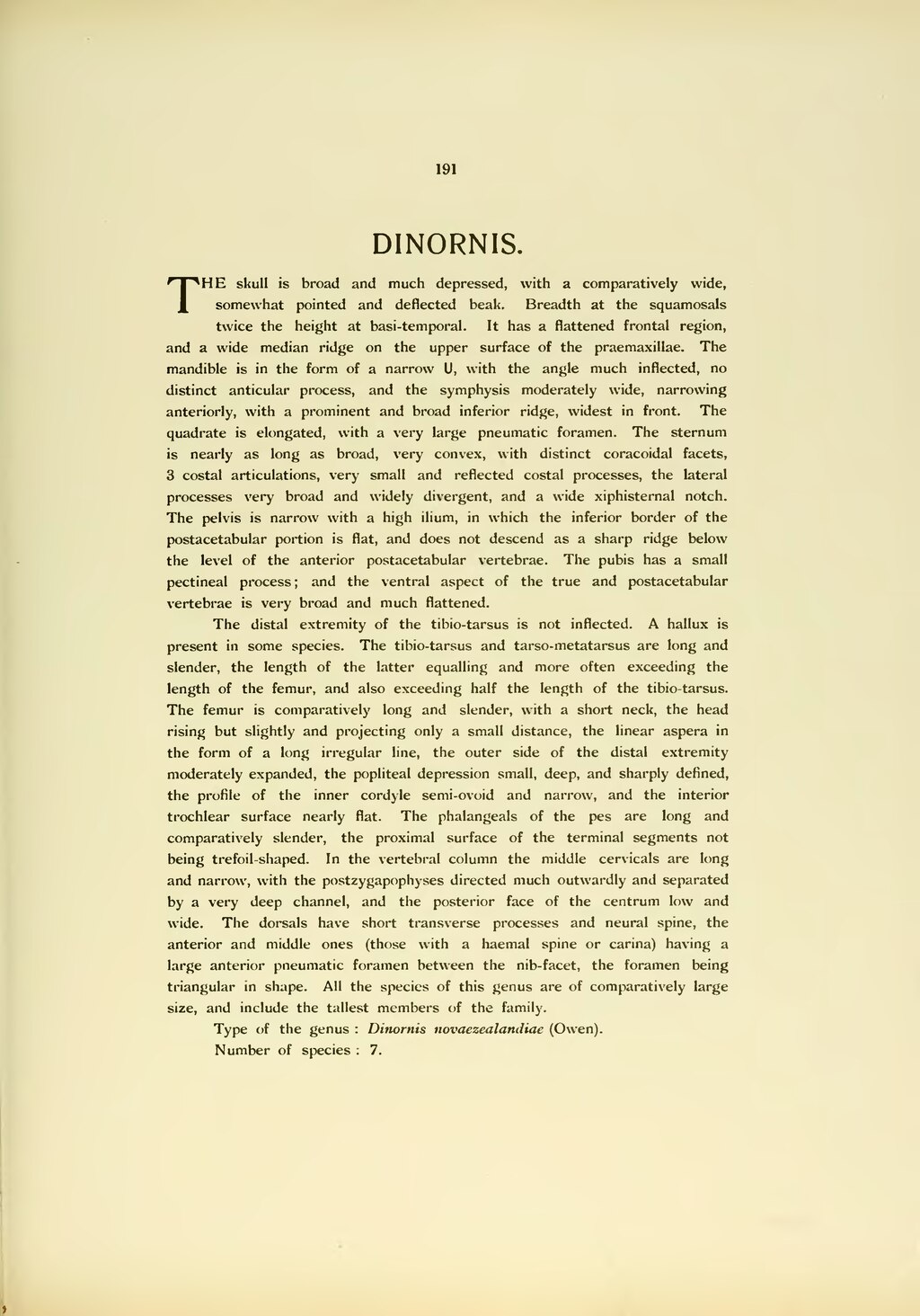191
DINORNIS.
The skull is broad and much depressed, with a comparatively wide, somewhat pointed and deflected beak. Breadth at the squamosals twice the height at basi-temporal. It has a flattened frontal region, and a wide median ridge on the upper surface of the praemaxillae. The mandible is in the form of a narrow U, with the angle much inflected, no distinct anticular process, and the symphysis moderately wide, narrowing anteriorly, with a prominent and broad inferior ridge, widest in front. The quadrate is elongated, with a very large pneumatic foramen. The sternum is nearly as long as broad, very convex, with distinct coracoidal facets, 3 costal articulations, very small and reflected costal processes, the lateral processes very broad and widely divergent, and a wide xiphisternal notch. The pelvis is narrow with a high ilium, in which the inferior border of the postacetabular portion is flat, and does not descend as a sharp ridge below the level of the anterior postacetabular vertebrae. The pubis has a small pectineal process; and the ventral aspect of the true and postacetabular vertebrae is very broad and much flattened.
The distal extremity of the tibio-tarsus is not inflected. A hallux is present in some species. The tibio-tarsus and tarso-metatarsus are long and slender, the length of the latter equalling and more often exceeding the length of the femur, and also exceeding half the length of the tibio-tarsus. The femur is comparatively long and slender, with a short neck, the head rising but slightly and projecting only a small distance, the linear aspera in the form of a long irregular line, the outer side of the distal extremity moderately expanded, the popliteal depression small, deep, and sharply defined, the profile of the inner condyle semi-ovoid and narrow, and the interior trochlear surface nearly flat. The phalangeals of the pes are long and comparatively slender, the proximal surface of the terminal segments not being trefoil-shaped. In the vertebral column the middle cervicals are long and narrow, with the postzygapophyses directed much outwardly and separated by a very deep channel, and the posterior face of the centrum low and wide. The dorsals have short transverse processes and neural spine, the anterior and middle ones (those with a haemal spine or carina) having a large anterior pneumatic foramen between the nib-facet, the foramen being triangular in shape. All the species of this genus are of comparatively large size, and include the tallest members of the family.
Type of the genus: Dinornis novaezealandiae (Owen).
Number of species: 7.
